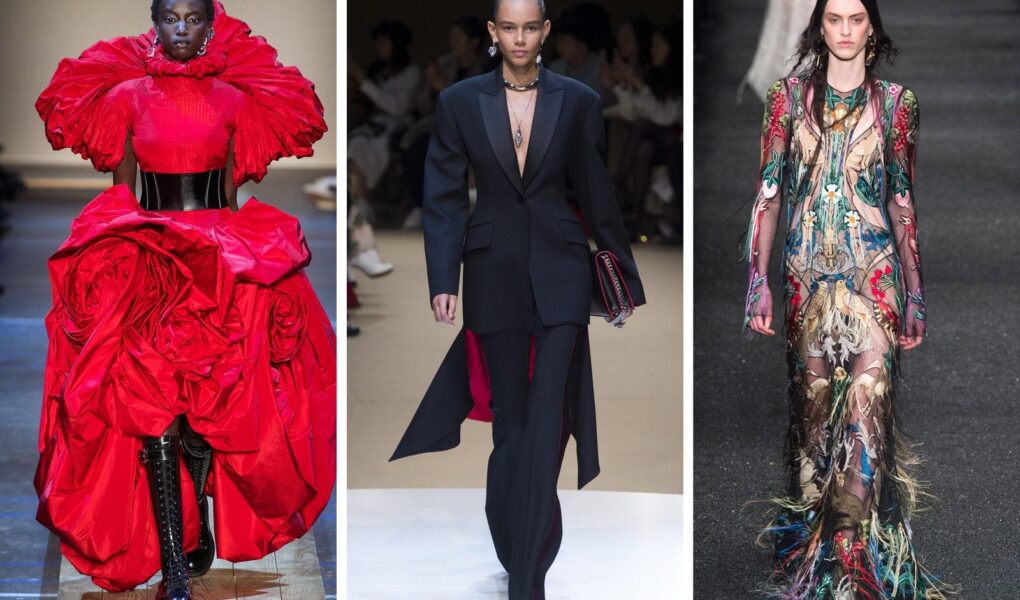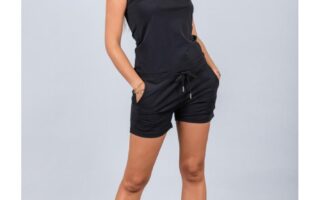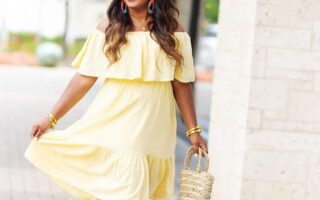In a world where self-expression transcends the boundaries of language and culture, clothing serves as a powerful medium through which individuality can be vividly articulated. Among the myriad ways to convey identity, female clothes design stands out as a fascinating intersection of artistry and functionality. From the delicate drape of a flowing dress to the structured silhouette of a tailored blazer, each garment tells a story that reflects not only the personal history of the wearer but also the evolution of societal norms and trends. This article delves into the intricate world of female fashion design, exploring its rich heritage, highlighting contemporary innovators, and examining the impact of cultural shifts on the very fabric of women’s clothing. Join us as we unravel the threads of creativity, empowerment, and innovation that have shaped—and continue to shape—the landscape of women’s fashion.
Table of Contents
- Exploring the Evolution of Female Fashion Design Through the Decades
- Innovative Fabrics and Sustainable Practices Shaping the Future of Womens Apparel
- Understanding Body Diversity: Designing for Real Women of All Shapes and Sizes
- The Art of Combining Functionality and Style in Womens Clothing
- Q&A
- Wrapping Up
Exploring the Evolution of Female Fashion Design Through the Decades
Throughout the decades, female fashion design has undergone a remarkable transformation, reflecting broader social changes and the evolving role of women in society. In the 1920s, the flapper movement encapsulated freedom and rebellion, as designers like Coco Chanel embraced casual sophistication and introduced looser silhouettes. This era marked a departure from the corseted styles of the previous century, making way for knee-length dresses and bold patterns. The 1960s ushered in a wave of youthful exuberance, with designers such as Mary Quant pioneering the miniskirt, which revolutionized women’s fashion by celebrating individualism and sexual liberation.
The 1980s introduced a new era of power dressing, characterized by strong shoulder pads and bold colors, symbolizing the rise of women in the corporate world. Designers like Gianni Versace and Diane von Furstenberg created pieces that exuded confidence and assertiveness, allowing women to reclaim their narrative in a male-dominated environment. Fast forward to the 2000s, where the influence of technology and global connectivity began to shape fashion. The rise of fast fashion brands allowed for quicker turnarounds in trends, making high-style accessible and diverse. As we look to the present, the movement toward sustainability in design continues to evolve, reflecting a conscious awareness of the impact fashion has on the planet and the society at large.
| Decade | Key Trends | Influential Designers |
|---|---|---|
| 1920s | Flapper dresses, dropped waist | Coco Chanel, Jean Patou |
| 1960s | Miniskirts, bold prints | Mary Quant, Pierre Cardin |
| 1980s | Power dressing, shoulder pads | Gianni Versace, Donna Karan |
| 2000s | Fast fashion, casual chic | Zara, H&M |
Innovative Fabrics and Sustainable Practices Shaping the Future of Womens Apparel
As the landscape of women’s apparel evolves, the intersection of innovative fabrics and sustainable practices emerges as a beacon of change. Designers are increasingly exploring materials that not only provide aesthetic appeal but also prioritize environmental impact. For instance, the rise of bio-based fibers, such as Tencel and organic cotton, is making waves in fashion. These fabrics offer exceptional comfort and breathability while ensuring a lower ecological footprint. Moreover, advancements in recycled textiles, such as garments created from post-consumer plastic waste, showcase how creativity and responsibility can merge to create beautiful, high-quality clothing.
Furthermore, sustainable production practices are becoming a core element of the apparel industry. Local sourcing, ethical labor practices, and zero-waste designs contribute to a more mindful approach to fashion. Brands are increasingly adopting techniques like digital printing, which minimizes water usage and waste during manufacturing. Below is a small table illustrating some key innovative fabrics alongside their sustainable benefits:
| Fabric | Sustainable Benefits |
|---|---|
| Tencel | Made from sustainably sourced wood pulp; biodegradable |
| Recycled Polyester | Reduces plastic waste; conserves resources |
| Organic Cotton | Grown without harmful pesticides; supports biodiversity |
Understanding Body Diversity: Designing for Real Women of All Shapes and Sizes
In today’s fashion landscape, it’s essential to recognize and embrace the beauty of body diversity. Women come in a myriad of shapes and sizes, and the design of clothing should reflect that variety. By understanding the different body types, designers can create garments that not only flatter but also empower women. This means moving away from one-size-fits-all molds and cultivating an inclusive approach to fashion. Consider incorporating features such as:
- Adjustable waistbands that accommodate different body sizes.
- Stretch fabrics that provide comfort and flexibility.
- Silhouettes that enhance curves without compromising on style.
Moreover, engaging with real women during the design process allows for authentic feedback and innovations. Conducting focus groups can reveal valuable insights about what women truly want and need from their clothing. A simple table can illustrate the differences in preferences among varying demographics:
| Size Group | Common Preferences |
|---|---|
| Small | Fitted styles, unique prints |
| Medium | Versatile silhouettes, classic designs |
| Large | Comfortable materials, flowy shapes |
| X-Large | Supportive cuts, layering options |
By celebrating body diversity in clothing design, we can create a fashion culture that values every woman’s unique shape and personal style. This inclusivity is not just a trend; it is a necessary evolution in the fashion industry that promotes confidence and self-expression in women of all sizes.
The Art of Combining Functionality and Style in Womens Clothing
In the ever-evolving realm of women’s fashion, the balance between functionality and style has become an essential focus for designers. Sophisticated contemporary clothing now emphasizes the need for versatile pieces that cater to the demands of daily life, while still allowing women to express their individuality. The design philosophy often revolves around:
- Comfort: Fabrics that move with the body without sacrificing style.
- Durability: High-quality materials that withstand both time and trends.
- Versatility: Items that can be easily dressed up or down for different occasions.
Additionally, the rise of sustainable fashion has introduced new materials and innovative designs that marry aesthetics with environmental consciousness. Leading brands now prioritize eco-friendly fabrics, encouraging women to not only look good but also feel good about their choices. This trend is often showcased in collections that feature:
| Style Element | Functionality | Example |
|---|---|---|
| Breathable Fabrics | Comfort in warm weather | Linen dresses |
| Multi-pocket Designs | Convenience on the go | Utility jackets |
| Adjustable Features | Custom fit | Wrap dresses |
Q&A
Q&A on Female Clothes Design
Q1: What is the philosophy behind female clothes design today?
A1: The philosophy of female clothes design has evolved to embrace individuality and self-expression. Today, designers focus on creating garments that empower women, allowing them to celebrate their unique identities. This approach emphasizes versatility, comfort, and an inclusive range of sizes and styles, catering to the diverse experiences of modern women.
Q2: How has technology impacted the design process for women’s clothing?
A2: Technology has revolutionized the design process in several ways. Advanced software enables designers to create intricate patterns and virtually prototype garments, reducing waste and time. Additionally, technology has facilitated a deeper connection with consumers through social media and e-commerce platforms, allowing designers to gather instant feedback and adapt to trends more swiftly.
Q3: What are some key trends currently shaping female clothes design?
A3: Current trends in female clothes design include sustainable fashion, which prioritizes eco-friendly materials and ethical production practices. There’s also a growing emphasis on inclusivity, with brands expanding their size ranges and incorporating adaptive features for those with disabilities. Other notable trends include bold prints, layering options, and the fusion of casual wear with formal attire, reflecting the dynamic lifestyles of contemporary women.
Q4: How do cultural influences manifest in female clothes design?
A4: Cultural influences play a significant role in shaping female clothes design. Designers often draw inspiration from their own heritage or global cultures, integrating traditional motifs, fabrics, and styles into modern garments. This cross-cultural exchange not only enriches fashion but also promotes appreciation for diversity and heritage, creating a tapestry of styles that resonates with women from various backgrounds.
Q5: What challenges do female designers face in the fashion industry?
A5: Female designers often confront challenges such as gender bias and underrepresentation in leadership roles within the fashion industry. They might also experience difficulties in accessing funding or gaining visibility compared to their male counterparts. Despite these challenges, many female designers are breaking barriers and making impactful contributions, championing equal opportunities and inspiring future generations.
Q6: How can consumers support female clothes designers?
A6: Consumers can support female clothes designers by consciously choosing to shop from brands that prioritize female leadership and ethical production. Engaging with these designers on social media, sharing their work, and attending local fashion events can also help amplify their voices. Additionally, investing in quality pieces rather than fast fashion contributes to a sustainable industry that values craftsmanship and creativity.
Q7: What role does sustainability play in the future of female clothes design?
A7: Sustainability is set to play a pivotal role in the future of female clothes design. As awareness of environmental issues grows, both consumers and designers are increasingly prioritizing sustainable practices. This includes the use of recycled materials, transparent supply chains, and producing timeless designs that encourage longer wear. The future landscape of fashion will likely focus on circular economies, where clothing is designed with longevity and recyclability in mind, fostering a healthier planet for generations to come.
Wrapping Up
As we conclude our exploration of female clothes design, it’s clear that this realm is not merely about fabric and thread but a profound expression of identity, culture, and innovation. The evolution of women’s fashion reflects societal changes, personal empowerment, and creative freedom, inviting us to appreciate not only the aesthetics but the stories woven into every garment. From the intricacies of design to the ethos of sustainability, the future of female clothing holds endless possibilities. As we move forward, let us embrace this journey of fashion as a continuous dialogue—one that celebrates diversity, encourages self-expression, and respects the artistry involved in crafting pieces that resonate deeply with women around the world. Here’s to inspiring designs that not only adorn but also empower.



